
网络媒体与全球传播(英文)(Online Media and Global Communication)(国际刊号)
- AMI入库
- 主管单位:
- 主办单位:
上海外国语大学
- 国际刊号:
- 国内刊号:
- 学科分类:
- 字数:
-
- 有无基金:
- 周期:
国际号刊-季刊
- 特殊属性:
外文期刊
- 电话:
- 邮箱:
OMGC@shisu.edu.cn(官网邮箱)
- 复合因子:
0
- 综合因子:
0
- 收录:
- 级别:
AMI入库
期刊简介
《网络媒体与全球传播》期刊已被查看: 次
更新频次
单位占比
一作占比
投稿指南
1、该刊只有国际刊号。
2、投稿方式:在线投稿。
3、刊内网址:
https://www.degruyter.com/journals/omgc
官网网址:http://omgc.shisu.edu.cn/
4、投稿系统:
https://mc.manuscriptcentral.com/omgc
5、官网邮箱:OMGC@shisu.edu.cn
6、出刊日期:季刊,逢季中月出版。
7、官方微信公众号:网络媒体与全球传播
2022年5月24日星期二
《网络媒体与全球传播(英文)》简介
【官方微信公众号信息】
网络媒体与全球传播 2022-03-22
《网络媒体与全球传播》是由上海外国语大学主办、德古意特出版社出版的开放获取(open access)及评审(refereed)的英语学术期刊。它旨在发表高质量、创新性和原创性的全球传播研究,着重关注但不限于全球南方国家对Facebook、TikTok、YouTube、推特、Instagram、Whatspps、微博、微信、维基百科、网站、博客等平台的应用,并努力在网络媒体和全球传播的背景下和实践上做出理论上的贡献。本刊将探讨全球数字媒体平台对国际关系、国际舆论、假新闻和宣传传播、消费者行为以及世界平等发声的影响和运作。
该刊一大特色是依托上外多语种优势,关注全球非西方、非英语国家学者多元的学术贡献,接受非英语语种投稿,并进行多语种翻译,使用中、法、西、英、俄、阿六种联合国官方语言发布摘要,打造无语言歧视的专业学术平台。
《网络媒体与全球传播》第一期已于近期发布上线。英文全文和多语种摘要下载阅读网址:https://www.degruyter.com/journal/key/omgc/1/1/html
本刊拥有两个网站。期刊的官方网站由德古意特出版社主办 (https://www.degruyter.com/journal/key/omgc/html), 聚焦与期刊相关的文章与指标。上海外国语大学的期刊网站 (http://omgc.shisu.edu.cn/12332/list.htm) 内容涵盖期刊相关新闻、期刊组织的活动等。
《网络媒体与全球传播》致力于发表高质量、创新性、原创性的全球传播研究, 尤其是全球网络媒体平台使用方面的研究, 如 Facebook、TikTok、YouTube、Twitter、Instagram、WhatsApp、微博、微信、维基百科、网站、博客等。我们期待在网络媒体和全球传播实践的基础上, 尤其是在发展中国家实践的基础上作出理论贡献。本刊将关注当今主要问题, 涉及全球数字媒体平台对国际关系、国际舆论、假新闻和宣传传播、社会变革、消费者行为、对国际发声平衡的影响和运作。同时, 鉴于全球城市将构成未来全球传播的主导 "媒体 "平台, 本刊亦将关注与联合国教科文组织提出的全球智慧城市发展相关的全球城市传播问题。
本刊刊登重要研究话题, 如线上线下媒体的国家间全球传播话语理论和方法、在线与非在线媒体的比较, 尤其欢迎跨国比较研究。单一国家研究若聚焦具有国际影响的在线媒体也在本刊考虑刊登的范围内。相比概念性研究, 本刊更欢迎经验性研究。描述性研究若样本具有全国代表性, 且具有标杆性质, 也将在刊登范围内。
除原创性研究文章, 《网络媒体与全球传播》将在每期刊登一篇关于非英语国家或地区的网络媒体和全球传播研究趋势以及发展现状的特约评论文章。此外, 每期还将有一篇在非英语传播期刊上发表的与本刊宗旨接近作为 “发展中国家的‘宝石’”的译文, 供读者参考。
本刊采用双轨制审稿, 据我所知, 这在传播学领域尚属首次。作者可以选择两种审稿方式。在正式投稿前作者须选择其中一种方式: 1) 双盲审稿 (双重盖名), 作者与审稿人都不知道作者身份; 2) 单盲审稿 (单一盖名) 审稿人知道作者身份。作者可以自由引用自己的作品并在稿件中提及自己。投稿人若已经将投稿稿件或其早期版本在网上发布、或者有超过 5 次的自我引用, 须采用单盲方式进行评审。这种审稿系统可最大限度地增加高水平审稿人的数量, 还可使得作者根据不同情况选择最合适的审稿路径。有关双轨制评审制度的好处以及原因, 请参见本人在同行评审周 (https://blog.degruyter.com/fact-or-fake-the-question-of-anonymity-in-peer-review/) 发表的博文和在《新闻与大众传播季刊》(https://journals.sagepub.com/doi/full/10.1177/1077699020904383) 上发表的社论文章。
不同文化中的姓名有所不同, 有些文化中姓氏比较类似, 有些文化中姓氏非常不同。为适应不同文化在姓氏方面的差异, 创造公平的引用方式, 我们使用我们出版社的引用格式, 这个格式与 APA 接近, 但要求在参考文献部分列出作者全名/名字。鉴于论文的内容是决定其发表价值的最重要因素, 我们欢迎作者的初始投稿使用不同引文方式。有关本刊的投稿指南, 请访问本刊网站。我们投稿平台使用的是ScholarOne (https://mc.manuscriptcentral.com/omgc)。
《网络媒体与全球传播(英文)》征稿启事
(Online Media & Global Communication)
【官方微信公众号信息】
网络媒体与全球传播 2021-12-07
本刊投稿采用结构化的摘要格式,包括:1)研究目的 、2)方法、 3)重大发现 、4)实际价值 、5)社会和理论意义、 6) 原创性和贡献。
作者投稿指南 | GUIDELINES
出版伦理。本刊对审稿人和作者都将遵循出版伦理委员会的指导原则
原创投稿。所有主动提交的稿件必须是原创的,且未曾以英语或其他语言在印刷品或在线出版物上发表过的。已在网上发布的稿件,如大学网站、预印本服务器或文件共享网站,必须在封面信中自行说明这种发布情况,并接受单盲审查。
投稿程序。 作者使用ScholarOne期刊投稿系统向本刊投稿。该系统目前正在建设中,欢迎作者直接向编辑提交摘要,以确定稿件是否合适,然后再向本刊电子邮件提交全稿: OMGC@shisu.edu.cn
封面信(cover letter)。 所有新的投稿必须包括一封封面信,解释该稿件是否是第一次使用该数据集。如果不是,那么作者应报告以前使用同一数据集的文章或向其他期刊投稿的情况,并解释所投稿件比以前的文章和其他期刊正在评审的稿件在知识上的进步。
摘要和关键词。稿件必须包括总字数不超过300字的结构化摘要格式(目的、方法、结果、影响、价值)和适当的关键词,以帮助确定适当的审稿人。最多可以接受八个关键词。关键词必须包括研究的国家/地区、研究方法和被研究的网络媒体平台的名称,如YouTube或Social Media等类别。
引述自己的作品。当作者选择双盲审查轨道时,不鼓励过多的自我引用(超过5次),否则将被视为试图识别作者的行为, 稿件将自动进行单面审查。需要引用自己以前的作品的作者应与其他作者一样引用,不需要说明该作品是由作者撰写的。唯一的例外是报刊杂志或即将出版的文章。在这些情况下,文内参考应该是(作者,在编/即将出版)。在单盲审稿轨道中,作者可以在稿件的正文中自由引用和参考自己的作品,只要适当,对自我引用没有限制。
*另,本刊目前正在接收“短视频与全球传播”主题专刊的摘要,摘要投稿截止日已延期至2021年12月15日,全文截稿时间另行通知。欢迎研究短视频与国际传播议题的学者踊跃投稿。
CALL FOR PAPER
**如需免费订阅本刊(包括新文章提醒)和进入上海外国语大学中国国际舆情研究中心的研究数据库,请发送邮件至:OMGC@shisu.edu.cn,题目为:SUBSCRIBE/订阅。
有关投稿咨询,请发送邮件至创刊主编:美国博林格林州立大学卓越研究教授Louisa Ha(OMGC@shisu.edu.cn )。
投稿须知Submit
【官网信息】
Preparing your manuscript
Before submitting your manuscript to Online Media and Global Communication, please ensure you have read the Objective to make sure that the topic of your contribution is relevant to this journal and follow the guideline below:
Author Submission Guideline:
1. Publication Ethics
The journal will follow the Committee on Publication Ethics guideline for both reviewers and the authors. https://publicationethics.org/
2. Original Submissions
All unsolicited authors’ submissions must be original and have not been published in English or other languages, either in print or online publications. Manuscripts which have been posted online such as university web sites, in preprint servers or file-sharing sites must self-identify such posting in the cover letter and undergo single-masked review.
3. Submission procedure
Authors are welcome to submit abstracts to the editor to determine the appropriateness of the manuscript before submitting the full-length manuscript to our journal e-mail: OMGC@shisu.edu.cn. Submit the full manuscript to our ScholarOne platform at: http://mc.manuscriptcentral.com/omgc.
4. Cover Letter
All new submissions must include a cover letter explaining whether the manuscript is the first time the dataset was being used. If not, then the author should report previous articles or submissions to other journals using the same dataset and explaining the advancement of knowledge of the submitted manuscript over previous articles and other manuscripts under review in other journals.
5. Abstracts and keywords
Manuscripts must include a structured abstract no longer than 300 words in total (purpose, method, findings, implications, value) and proper keywords to help identify appropriate reviewers, see example. Up to eight keywords can be accepted. The keywords must include country/region of study, research method, and the name of the online media platform being studied such as YouTube or category such as social media.
6. Dual Track Review
This journal adopts a dual track review system as the first in the field of communication. Two review tracks are offered to the authors and authors must choose either one before final submission: 1) double blind (masked) review track that both authors and reviewers do not know the identity of the author; 2) single blind (masked) review track that reviewers will know the identity of the author and the authors are free to cite their own works and refer to themselves in the manuscript. Submitters who have posted their manuscript or its earlier version elsewhere online or with more than five self-citations will undergo the review process using the single-blind review track. All original submissions are in English with reviews by two or more reviewers.
6. Citing your own works
When authors choose double-masked review track, excessive self-citations (more than 5) are discouraged and will be viewed as an attempt to identify the author. Such manuscript will undergo single-masked review automatically. Authors going through a double-masked review track who need to cite their own previous works should cite them in the same way as other authors. There is no need to specify the work is written by the author. The only exceptions are in press or forthcoming articles. In those cases, the in-text reference should be (Authors, in press/forthcoming). In single-masked review track, authors are free to cite and refer to their own works in the text of the manuscript and there is no limit on self-citations as long as they are appropriate.
7. Citation style
The journal follows the De Gruyter Mouton Journal Style Sheet and publishes in American English. This means that in the reference section, authors are required to provide the full name of each cited author such as Chen, Daiwen and Kaoqiu Lu (2020), instead of initials, to help identify authors in non-English speaking countries who have little differentiation by last name. Authors can also submit manuscripts in other common citation styles in their initial submission, such as APA, MLA, Harvard, Chicago, etc.
The Shanghai International Studies University web page link in English is http://en.shisu.edu.cn/. We also have a journal specific web page, http://omgc.shisu.edu.cn/12332/list.htm, which covers events organized by the journal and other news.
Your benefits of publishing with us
High quality peer-reviewing
Open access publication
Rapid turnaround times
Every article easily discoverable because of Search Engine Optimization (SEO) and comprehensive abstracting and indexing services
Secure archiving by De Gruyter and the independent archiving service Portico
Professional sales and marketing activities
Please note
Before submitting your article please have a look at our Ethical Guidelines and our Copyright Transfer Agreement
Do not submit work that has been submitted elsewhere or has been published previously
Manuscripts must be written in clear and concise English
A Research Article should normally be no more than 8,000 words in text in English
A Publication Ethics Statement and a signed copyright agreement are required before publication
If you have any general questions please visit our FAQ page for authors
We look forward to receiving your manuscript!
更多详情请查看期刊官网信息。
上一篇:复旦国际关系评论(集刊)下一篇:证券法苑(集刊)
《网络媒体与全球传播》同类新闻出版期刊
-

出版广角(优稿不收版面费)
北核,C扩,武A,AMI扩
CN中文-半月刊影响因子1.171
-
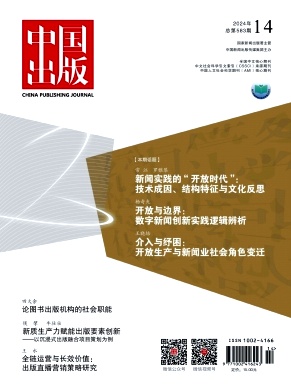
中国出版
C刊,北核,AMI核心,武A
CN中文-半月刊影响因子1.706
-

传媒(不收版面费审稿费)
C扩,AMI扩,武B+
CN中文-半月刊影响因子1.114
-
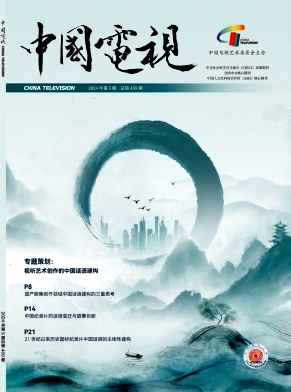
中国电视(不收版面费审稿费)
C刊,北核,武A+,AMI核心
CN中文-月刊影响因子0.952
-

编辑之友
C刊,北核,AMI核心,武A
CN中文-月刊影响因子2.119
-
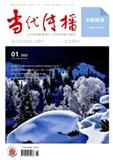
当代传播(不收版面费审稿费)
C刊,北核,AMI核心,武A
CN中文-双月刊影响因子2.313
-
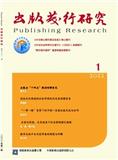
出版发行研究
C刊,北核,武A,AMI扩
CN中文-月刊影响因子1.687
-
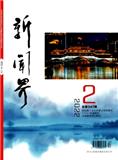
新闻界(不收版面费审稿费)
C刊,北核,AMI核心,武A
CN中文-月刊影响因子3.843
常见问题
-
网络媒体与全球传播杂志社官网、联系方式是什么?
网络媒体与全球传播杂志社官网:https://www.degruyter.com/journals/omgc
投稿网址:https://mc.manuscriptcentral.com/omgc
投稿邮箱:OMGC@shisu.edu.cn(官网邮箱) -
网络媒体与全球传播杂志是核心期刊么?
网络媒体与全球传播是核心期刊,级别是:AMI入库, 是:新闻出版分类下的
-
请问你们是网络媒体与全球传播杂志社吗?
我们不是《网络媒体与全球传播》杂志社。本站主要从事期刊信息展示与期刊推荐,不是任何杂志官网,直投稿件请联系杂志社。本站仅提供免费的学术指导、论文辅导、期刊投稿信息整理收集服务。
-
你们指导服务后可以保证文章被发表吗?
期刊发表的成功与否,主要取决于文章内容的质量。编辑老师会根据研究领域、创新性等多因素进行考量。我们会帮助您理解期刊的发表要求,助力提升发表几率,从而增加发表的机会。
-
晋级论文能否在报纸上发表?
在学术界,论文的发表往往被视为研究者职业发展的重要一环。晋级论文,即为了获得更高职称或学术地位而撰写的学术论文,通常需在专业期刊上发表。然而,许多人可能会问
